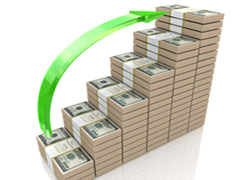 The American currency climbed to 7 year high against the Japanese currency, this just before a forecast that would show that the American manufacturing had performed better than its global peers this further supporting the viewpoint for higher rates of interest for the largest economy in the world.
The American currency climbed to 7 year high against the Japanese currency, this just before a forecast that would show that the American manufacturing had performed better than its global peers this further supporting the viewpoint for higher rates of interest for the largest economy in the world.
The American currency furthered its gains versus the currencies of other countries producing commodities after oil had slumped to a 5 year low. The Aussie dollar fell to a 4 year low on need for gold diminished when voters in the small Swiss country did not accept a referendum to make the Swiss National Bank to have in its possession more metal. China is the largest producer of gold followed by Australia. The franc of Switzerland dropped.
The senior analyst at Ueda Harlow Ltd., in Tokyo said; [quote]The dollar will probably remain strong amid declines in oil prices and dovishness among other nations’ central banks. If oil prices continue to fall, that would build the case for easy monetary policy in more places than just Europe and Japan.[/quote]
The U.S. currency climbed 0.2 percent to 118.88 yen at 12:49 pm Tokyo time on the 28th of November when it reached 119.03 that is the highest since 2007 August. It was unfazed at $1.2451 per euro. The Yen fell 0.2 percent to 147.99 per euro.
The performance of the American manufacturing was quicker than was forecast in November. Another index that measures business activity got 55 as opposed to a quick estimate of 54.7, this according to a survey. Anything above 50 shows expansion.





